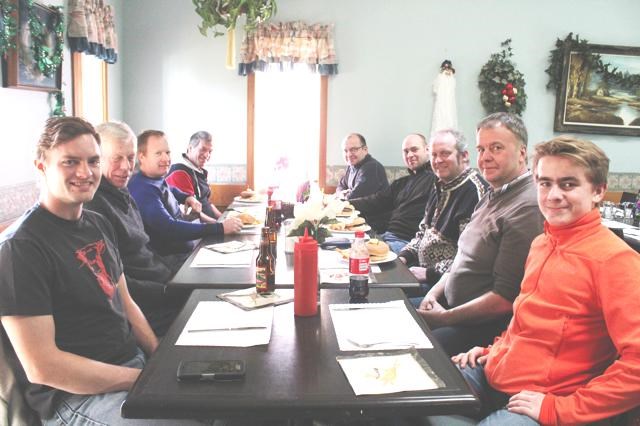A group of beef producers from Norway and one from Finland stopped in Limerick for lunch at the Limerick hotel during the week of November 21. The groups had been attending the Canadian Western Agribition and were interested in touring ranches in southern Saskatchewan to view operations and talk genetics. There were nine Limousin producers from Norway who visited Yorga Farms near Flintoff.
For most of the group, it was their first time visiting Saskatchewan and the Agribition. They were most struck by the size of Saskatchewan’s cattle operations and the size of the cattle. Smiling and joking, they noted that the largest beef producers in Norway have about 20 head on average. Given the space restrictions in European countries like Norway and Finland, they are looking for the most efficient breeds to turn grazing land into protein.
Michael Latimer from the Agribition’s International Program stated there were delegations from about 80 countries attending the Agribition. By the fifth day of the event, it had attracted 329 international buyers, which is a huge jump from the 200 attending last year.
“This has been a benchmark year for us in a lot of ways. We have really strong attendance here at the gates,” said Chris Lane, CEO of Canadian Western Agribition. “We know we are going to be setting records on the international front in terms of visitors that we have welcomed here.”
The two largest groups were the ones touring around Wood Mountain and Flintoff, a group of 20 from Finland and a group of 40 from Norway. Some of the countries represented at the Agribition this year include Kazakhstan, Mexico, Brazil, Columbia, Australia, China and Estonia. Canadian beef has become an attraction in European countries signalling a shift in customer preferences for high quality beef.
According to Latimer, these foreign buyers are mostly coming to view and acquire genetics and stock to improve their herds. “Canada has a good reputation for most breeds,” he said. Some will be taking embryos and semen back, while others are looking to purchase bulls.
Although the foreign buyers are taking genetics back with them, Canada is no danger of competition from these countries. A lot of the production of these countries will be sold domestically. As Latimer points out, the Saskatchewan beef industry isn’t about to turn away customers. The delegations could shop elsewhere for their genetics. “We like to see this go back to Canadian genetics,” he added.
The Agribition has an important economic spin off for Regina, but clearly the entire province is benefiting. Saskatchewan cattle ranches and farming communities are a short drive away for interested international and domestic buyers.



